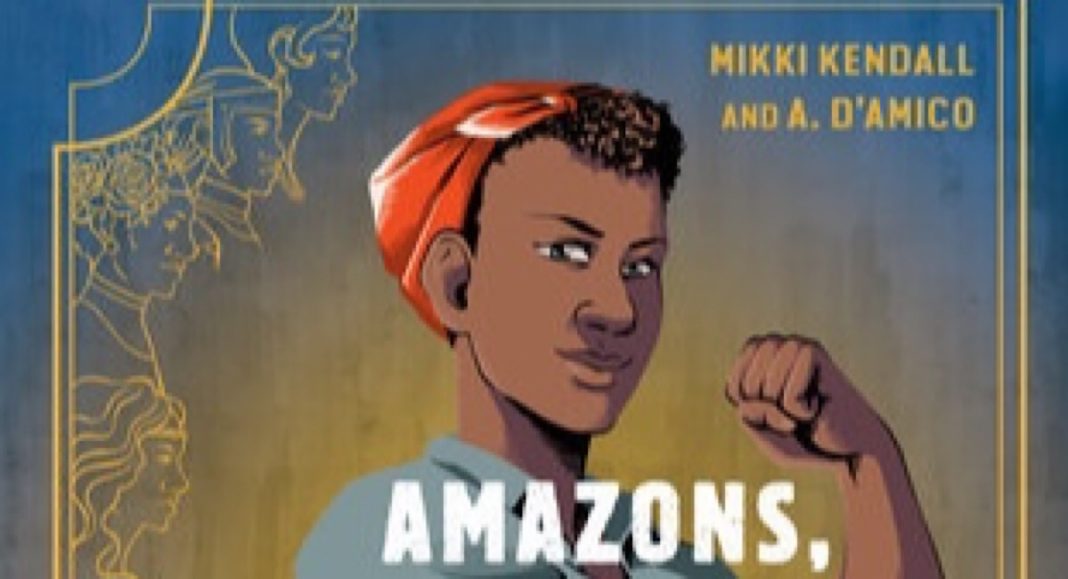
Writer: Mikki Kendall
Artist: Aster D’Amico
Publisher: Ten Speed Press
List Price: $19.99
Amazons, Abolitionists, and Activists is a comprehensive graphic history by historian Mikki Kendall and artist Aster D’Amico of the women who played positive and negative roles in defining women’s rights, from antiquity to the modern age.
As six girls argue about who won the fight for women’s rights, a white-haired, purple-skinned, female AI interrupts their discussion and proceeds to school the girls on the events and issues facing women globally. The AI’s journey begins in 3000 BC Sumer, the origins of modern women’s rights. While women in ancient civilizations did not have access to education and their marital and reproductive rights were controlled by men, they did enjoy a number of freedoms. Women were allowed to own property, conduct business, and in some cases serve as warriors, spies, priestesses, or rulers of powerful kingdoms.
But the expansion of the Roman Empire’s patriarchal ideals about women helped to curtail many of the freedoms women previously enjoyed. Yet, as Kendall writes, “The history of women’s rights isn’t linear. It’s complicated and different cultures had different norms.”
While societies expected women to live more domesticated lives in the home, in reality women were doing the same work as men. And as women fought to be on equal footing with men in the suffrage movement, even women found cause to turn against their own gender, using racism as justification to withhold equal rights to other women. In Susan B. Anthony’s and Elizabeth Cady Stanton’s view, white women deserved to be equal to white men, but this equality did not extend to colored women.
Kendall and D’Amico give obscure and well-known activists, LGBTQ rights, reproductive rights (and eugenics), and labor rights generous coverage in Amazons, Abolitionists, and Activists. Kendall’s thoughtful additions of some of these little known figures compels readers to pursue their own research on the topic. And D’Amico’s colorful, detailed portraits of the women add to the narrative’s historical context. Despite being a graphic novel, its historical and cultural depth gives the book a more serious and scholarly appeal.
A particular scene in Amazons, Abolitionists, and Activists speaks to the divisiveness of modern politics. One of the girls engages in an argument as to the meaning of the hijab, the head covering worn by some Muslim women. While one student sees it as oppressive to women, the Muslim girl sees it as a choice that has cultural roots.
Indeed, Kendall and D’Amico trace the origins of the hijab to 1100 CE Al Quaaouyine in Fez, Morocco: “Although Islamic law and custom recognized that Muslim women of this time were expected to become wives and mothers, no area of learning was closed to them. The hijab and niqab have their roots here, in both custom and culture.” These points of view are what make the book such an important and valuable teaching tool—its relevance and attention to the issues that touch women globally today.
Amazons, Abolitionists, and Activists is a wonderful and surprisingly informative addition to the canon of women’s rights literature.








